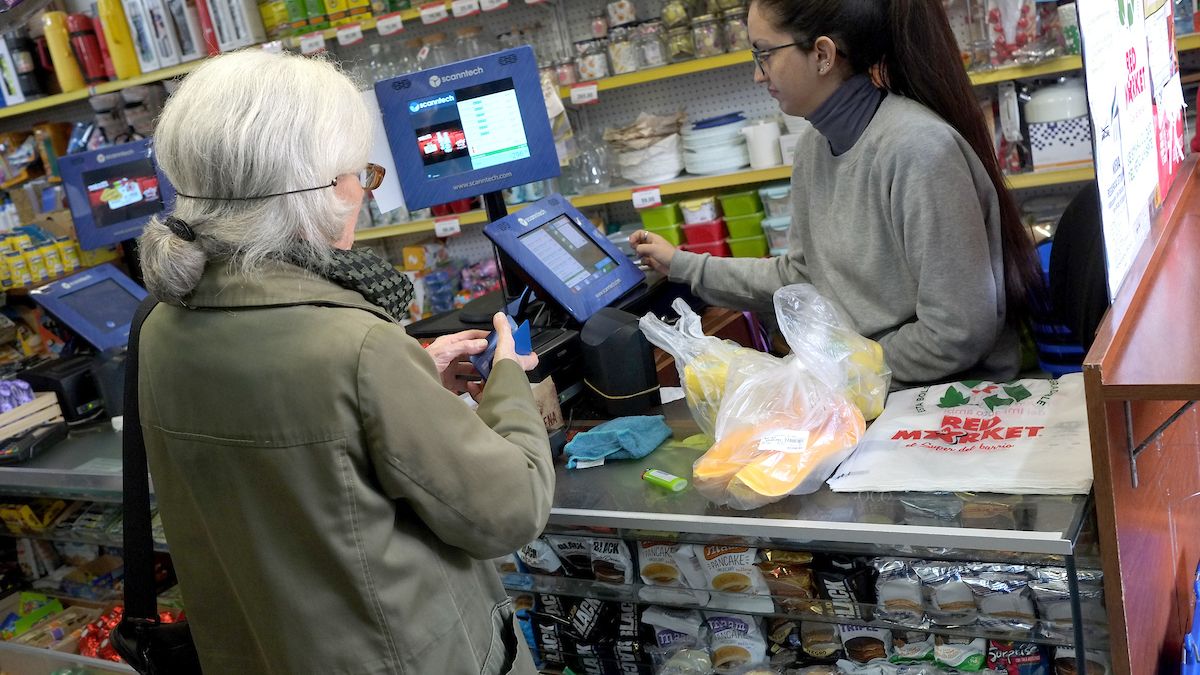The situation of currency gap between Uruguay and Argentina does not seem to have a positive outcome in the short and medium term, and this is how they understand it in the National Chamber of Commerce and Services (CNCS)for which there will be no “big changes” in this regard during this year.
Optimism is not the prevailing sentiment among the companies that make up the CNCS: 47% estimate that their level of sales in real terms will remain stable in the first quarter of the year; 41% believe that they will increase; and 12% that they will decrease.
The forecasts are part of the chamber’s annual activity survey, the results of which were presented Wednesday by the union’s economic studies team. “We do not expect strong changes in the evolution of sales for the first quarter of the year,” he stressed. Ana Laura Fernandezin charge of the economic department of the CNCS.
According to the agency’s survey, it is expected that this year there will be a possible increase in domestic consumption, from a possible increase in wages, as well as a “brake” in the creation of jobs. However, no one expects “big changes” in the exchange difference between Uruguay and Argentina.
Recovery of domestic consumption
The sectors of activity that will surely achieve capitalize more effectively on the increase in domestic consumption it will be hotels, supermarkets and opticians. On the other hand, household appliance stores and automotive companies do not have many expectations in this regard.
Along the same lines, the survey shows that “the large companies are those that denote a higher rate of positive responses, while the micro ones are the ones that show the worst records”. Statistical data is the best example: in the last quarter of 2022, large companies increased their sales by 2%, while micro-enterprises had a drop of 8%.
Beyond this, merchants agree that the growth in consumption has already begun to be noticed hand in hand with the recovery of wages after two very negative years during the pandemic. Likewise, there are expectations around the final adjustments of the expiration of the collective agreements, with the closing of the tenth round of the Salary Tipsscheduled for June.
Likewise, the CNCS survey estimates that during 2023 the recovery of the wage bill “will be explained by the behavior of real wages and not employment”. Because, in this last aspect, there will be a “brake in the speed of job creation.” In this sense, it is noted that in terms of employment last year began with a year-on-year variation above 4% but ended with values below 1%.
A currency gap far from closing
Another of the points discussed during the presentation of the results of the CNCS survey was the dollar and, consequently, the difference in prices with Argentina, which directly affects local trade; especially at the border.
In this sense, the entity’s technical team indicated that the dollar is expected to maintain its “weakening trend” against the Uruguayan peso during 2023, despite multiple efforts to revalue the foreign currency and make the Uruguayan economy more competitive. For December, a dollar of around 41 pesos is projected. According to Fernández, this will have an impact on Uruguay’s exchange rate gap with the region, which “today is structural”.
“We are not projecting big changes regarding the exchange rate gap that Uruguay is facing today with respect to its main neighbors, both Argentina and Brazil. Uruguay is expensive in dollars and we project that this increase in Uruguay’s price compared to the rest of the world will not change in 2023,” said the economist from the trade union.
In this sense, during the first month of the year there was a price difference of 144% between Leap and Concord, according to the observations of the UCatholic University of Uruguay (UCU). The solution seems very distant, since neither Uruguay nor Argentina are advancing in ways that allow this situation to be changed.
About, traders expect currency gap to worsenwhile a dollar is expected at 600 pesos in Argentina by the end of the year, which would generate an even greater difference, taking away customers and promoting smuggling at the border.
Source: Ambito




